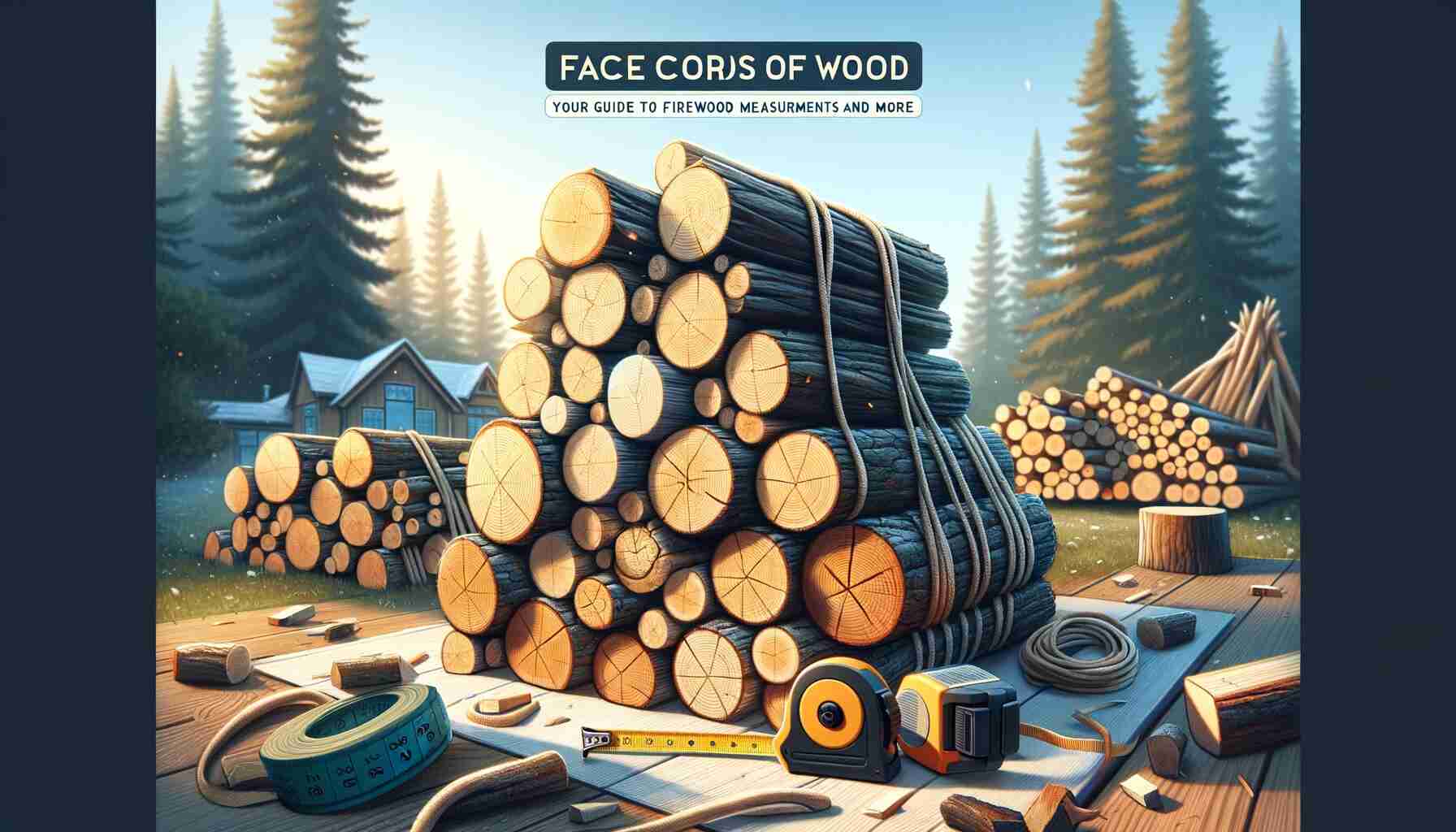Let’s be honest, diving into the world of firewood can be a bit like wandering through a forest of terms – face cords, bush cords, full cords – it’s enough to make your head spin! I’ve been right where you are, and I’m here to guide you through it.
First off, these terms – face cord, bush cord, full cord – they’re all about measuring firewood. Imagine a face cord like a neatly stacked pile that’s 8 feet long and 4 feet high but with a depth that changes. A bush cord? That’s firewood with split ends pointing every which way. And a full cord? Picture (picture is below) a big cube of wood, 8 feet by 4 feet by 4 feet, packing 128 cubic feet of firewood goodness.
In this friendly guide, I’ll take you step by step through the maze of face cord measurements. Whether you’re a firewood aficionado or a newbie, I promise to make this as enjoyable as sipping hot cocoa by your fireside. Ready? Let’s jump in!
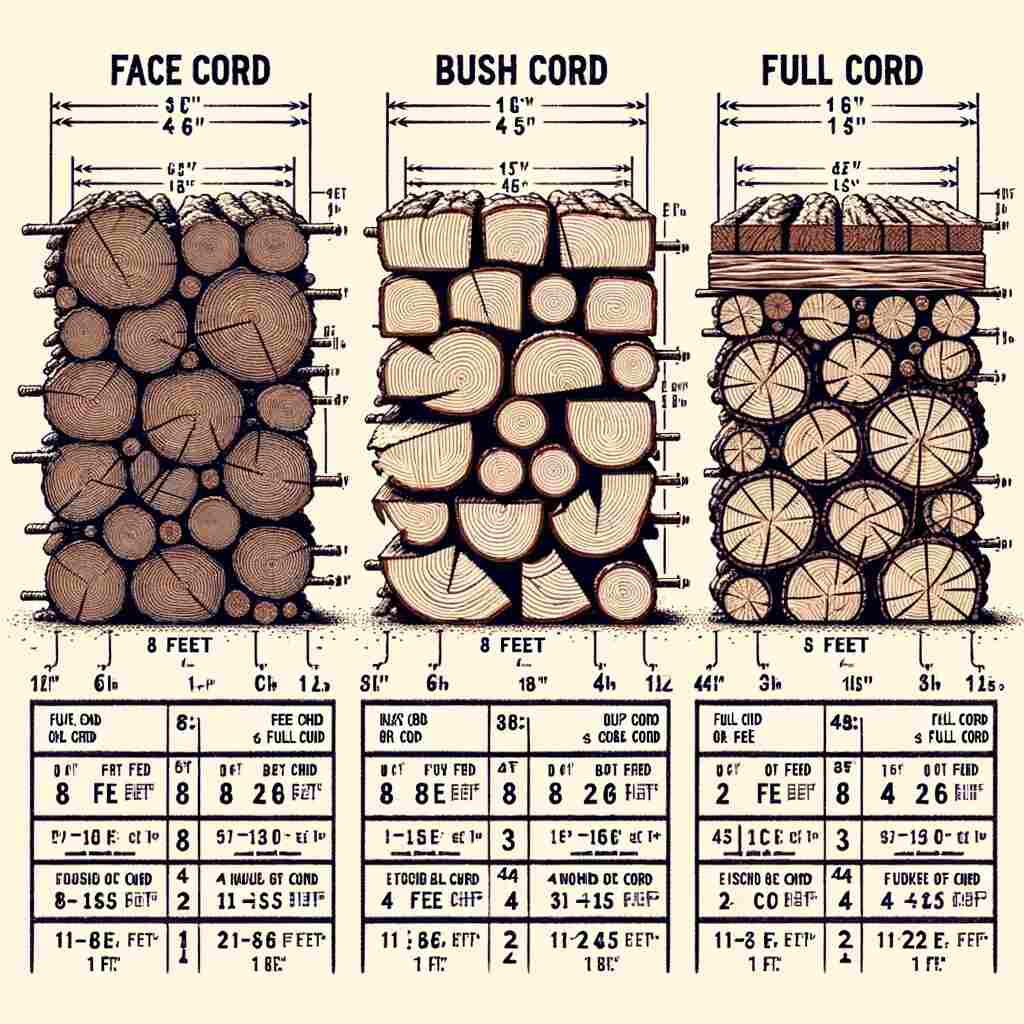
Face Cords of Wood 101: Unraveling the Mystery
The face cord can be a bit of a puzzle. Let me simplify it for you. It’s a single row of firewood, all lined up with split ends smiling at you. But here’s the catch: a face cord isn’t a one-size-fits-all deal like a gallon of milk. It’s more about how the wood is stacked.
Usually, a face cord is 8 feet long and 4 feet high, but the depth? That’s the wildcard. It changes based on how long the wood pieces are – 16 inches, maybe 18, or even 24 inches, depending on who you’re buying from or what you prefer.
And here’s where it gets interesting – the volume of a face cord can vary. In some places, it’s about a third of a full cord, but elsewhere, it could be close to half a cord. That’s why it’s super important to ask your supplier about their specific measurements.
So, in a nutshell, a face cord is a practical and easy way to buy and store firewood. Just be sure to know the local lingo and get the right amount for your needs.
Face Cord vs. Full Cord: Spot the Difference
Ready to dive deeper? Let’s distinguish between a face cord and a full cord. Understanding this difference is key to avoiding surprises and ensuring you get just the right amount of firewood.
- Face Cord: It’s that 8-foot-long, 4-foot-high stack we talked about, with depth varying based on the wood piece length. Remember, it’s not a standardized measurement and can differ in volume.
- Full Cord: The big brother in the firewood family. This is your standard measurement in the firewood world: a voluminous stack, 8 feet by 4 feet by 4 feet, totaling 128 cubic feet of firewood.
The major differences? Volume, for one – a full cord has about three times the firewood of a face cord. Also, while a full cord is a universally recognized measurement, a face cord can vary. This affects pricing and practicality. Face cords are great for occasional use, while full cords are better for those needing a lot of firewood through winter.
Measuring Up: The Nitty-Gritty of a Face Cord
When it comes to the nitty-gritty of a face cord’s dimensions and measurements, it’s all about getting familiar with the standard sizing and the possible variations. Here’s what to look out for:
- Standard Dimensions: An 8-foot length and 4-foot height are your go-tos. The depth? That depends on how long the wood pieces are – typically 16, 18, or 24 inches.
- Measuring It Right: Grab your tape measure! Check that the length is 8 feet and the height is 4 feet. The depth will depend on the length of your wood pieces.
And remember, volumes can vary. Some places might say a face cord is a third of a full cord, others half a cord. Always check with your supplier and maybe even your local regulations.
Bush Cord: A Quick Explainer
Ever heard of a bush cord? It’s like a face cord but with a twist – the wood is stacked with split ends facing both in and out. This creates a denser stack than a face cord. It’s not as common, but knowing about it can be handy, especially in certain regions.
Half Face Cord vs. Full Face Cord: Which to Choose?
Choosing between a half-face cord and a full-face cord is all about assessing your firewood needs and storage space. A half-face cord is smaller and more manageable, great for limited space or occasional use. A full-face cord, on the other hand, is double the volume – perfect for regular use or if you have plenty of storage space.
The Price Tag on a Face Cord of Wood
As of my last check-in, a face cord could cost anywhere from $100 to $300 in the U.S., but this can vary based on wood type, piece length, season, and local market. Always shop around, compare, and balance price with quality.
Recognizing a Face Cord
Spotting a face cord is all about the arrangement – a neat row 8 feet long and 4 feet high, with the split ends facing outward. The depth depends on the length of your wood pieces. And remember, the volume can vary, so always clarify with your supplier.
Calculating the Measurement of a Cord
Calculating a cord of firewood is straightforward – just remember, it’s 8 feet long, 4 feet high, and 4 feet deep, totaling 128 cubic feet. Adjust the depth based on the length of your wood pieces to get the right volume.
Understanding Facecord Measurements
Face cord measurements can vary regionally, so always communicate clearly with your supplier about the specific volume. Compare prices based on actual volume and check local regulations if needed.
The Value of Face Cords of Firewood
Face cords are great for their manageable size, cost-effectiveness, and flexibility. They’re perfect for occasional use, trying new suppliers or wood types, and for those who value aesthetics in their firewood storage.
Capturing the Essence of Firewood: A Comprehensive Visual Collage
To enhance the visual appeal and comprehension of our guide, we’ve designed this section dedicated to an image collage. This collage will not only serve as a visual feast but also as a comprehensive summary of the various aspects of choosing and using firewood.
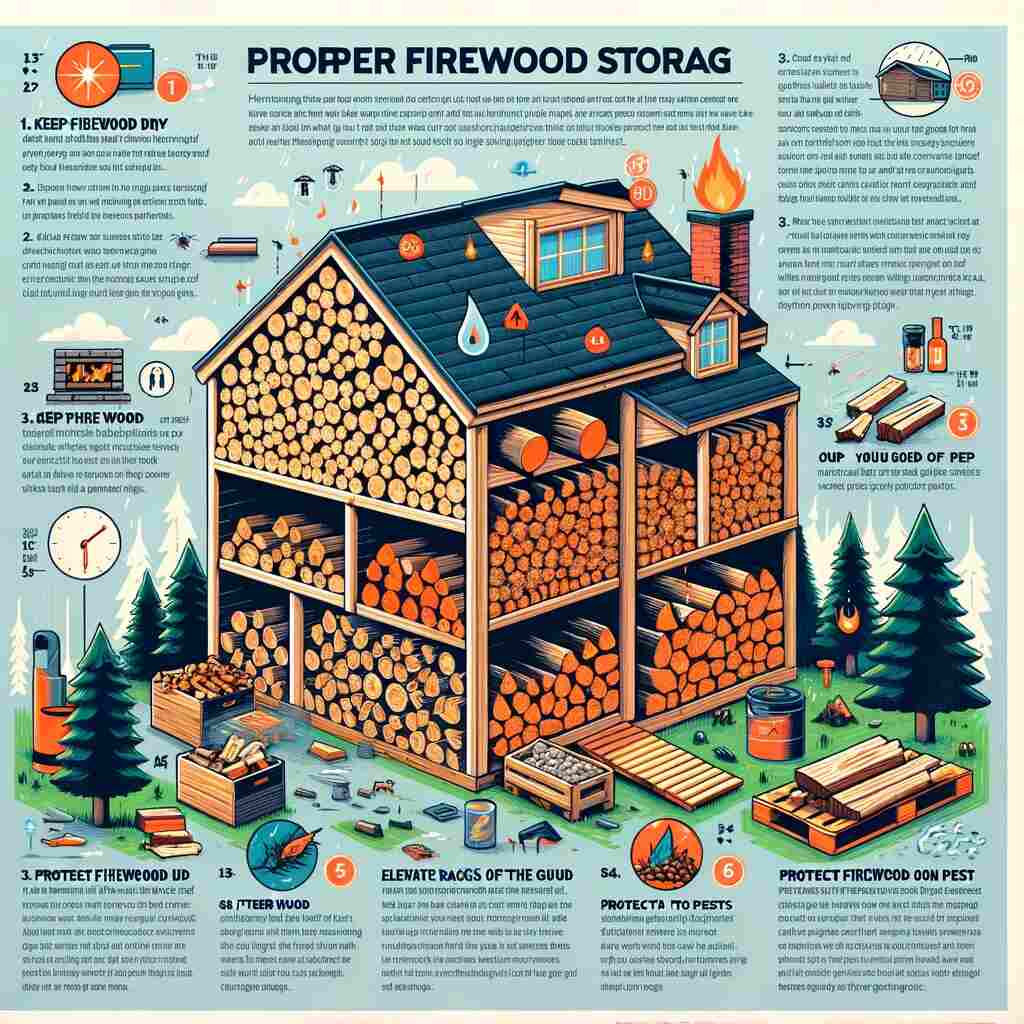

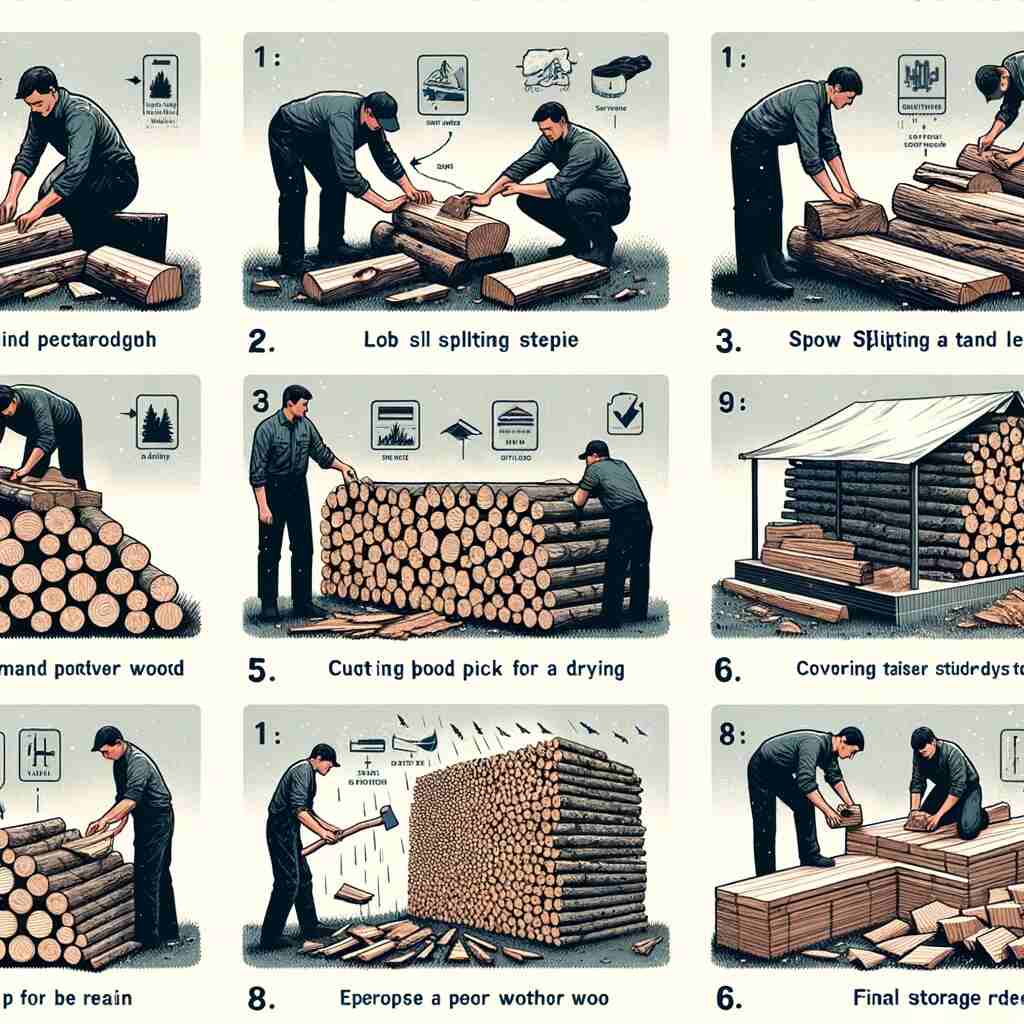
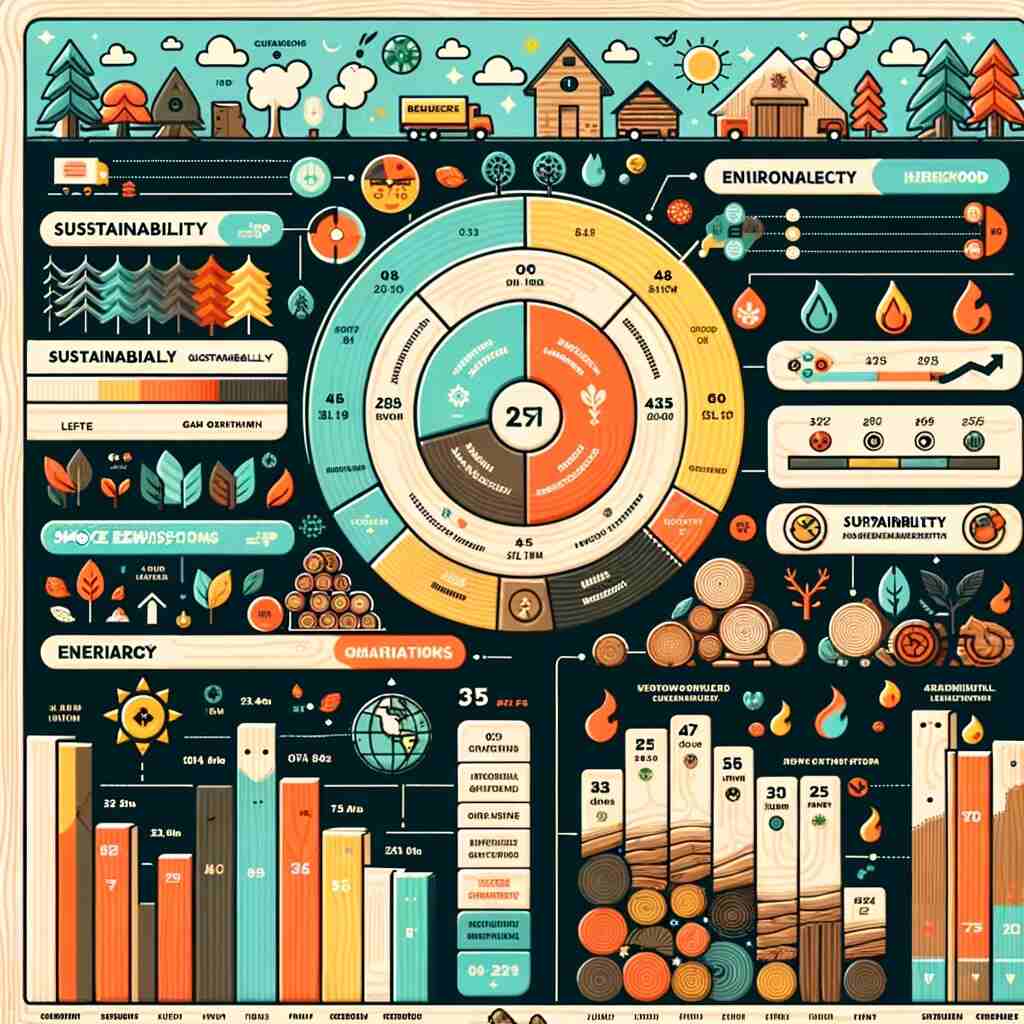
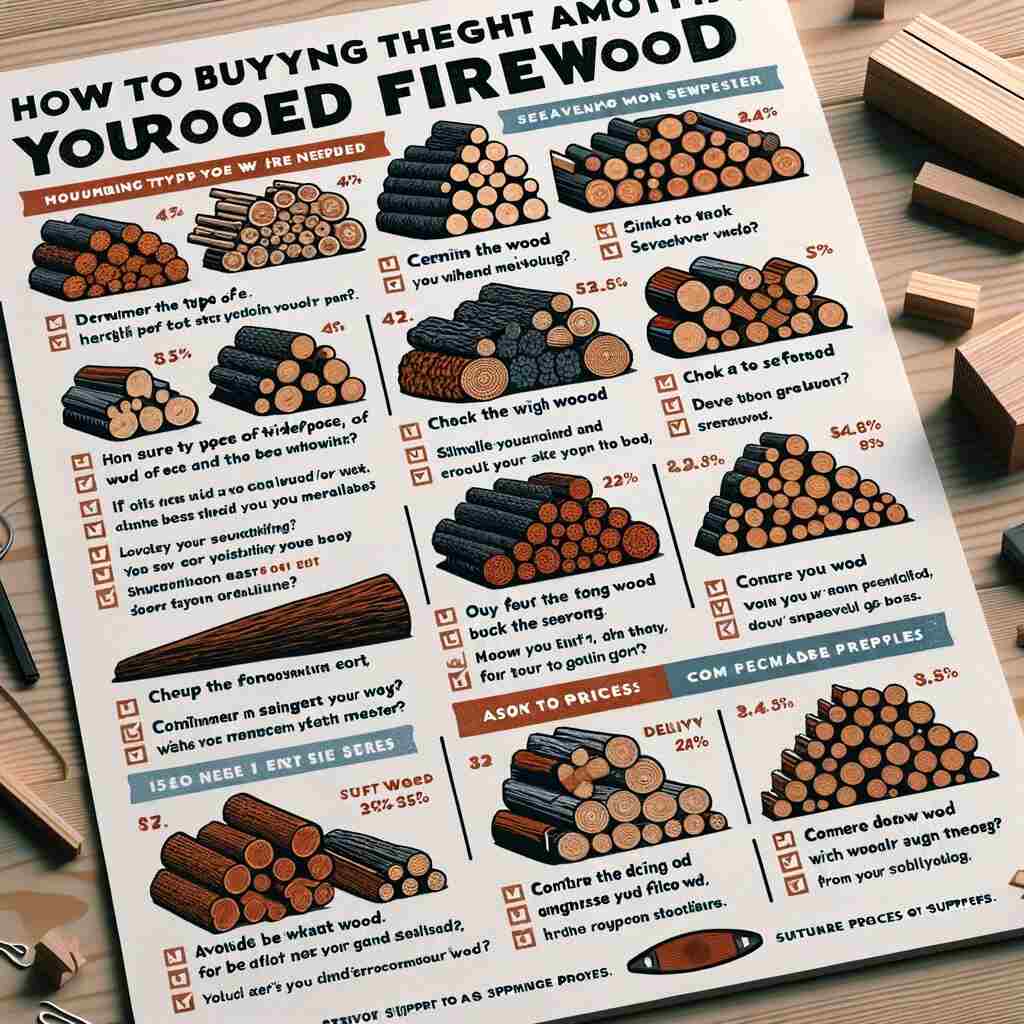
Frequently Asked Questions About Firewood
-
What is the difference between a face cord, a bush cord, and a full cord of firewood?
- A face cord typically measures 8 feet long and 4 feet high, with a variable depth depending on the length of the wood pieces. A bush cord is similar but has a denser stacking pattern. A full cord is a larger measurement, 8 feet long, 4 feet high, and 4 feet deep, totaling 128 cubic feet.
-
How do I choose the right type of wood for burning?
- Hardwoods like oak, maple, and birch are ideal for longer, hotter burns, making them great for heating. Softwoods like pine and cedar light easily and burn faster, suitable for kindling and quick fires.
-
What are the best practices for storing firewood?
- Store firewood off the ground to avoid moisture absorption and cover it to protect from rain and snow, while ensuring good airflow to prevent mold and rot. Keep it away from your home to avoid attracting pests.
-
How long does it take to season firewood?
- It typically takes about 6 months to a year to properly season firewood. The time varies depending on the type of wood and the climate. Wood is considered seasoned when its moisture content is below 20%.
-
How can I burn firewood more efficiently?
- Use well-seasoned wood, as it burns hotter and cleaner. Ensure your fireplace or wood stove is well-maintained and ventilated. Start with smaller pieces of kindling and gradually add larger logs.
-
Does the length of firewood pieces affect burning?
- Yes, the length of firewood pieces should be appropriate for the size of your fireplace or stove. Smaller pieces ignite faster but burn quicker, while larger logs burn slower and longer.
-
Can firewood be too dry to burn?
- While overly wet wood is a problem, extremely dry wood can burn too quickly and intensely, which might not be ideal for a controlled fire in a fireplace or stove.
-
How should I stack firewood for seasoning?
- Stack firewood in a sunny, well-ventilated area. Arrange the wood in a crisscross pattern for better air circulation, and don’t stack it too tightly.
- Is it okay to burn painted or treated wood?
- No, burning painted, treated, or any wood that contains chemicals can release harmful toxins into the air, which is dangerous for both health and the environment.
- What’s the best way to tell if my firewood is seasoned?
- Seasoned wood is lighter in weight, has cracks at the ends, and sounds hollow when knocked together. A moisture meter can also be used to check for a moisture content below 20%.
Wrapping It Up
There you have it – everything you need to know about face cords of firewood. Armed with this knowledge, you’re all set for a cozy and warm firewood buying experience. Stay toasty!

